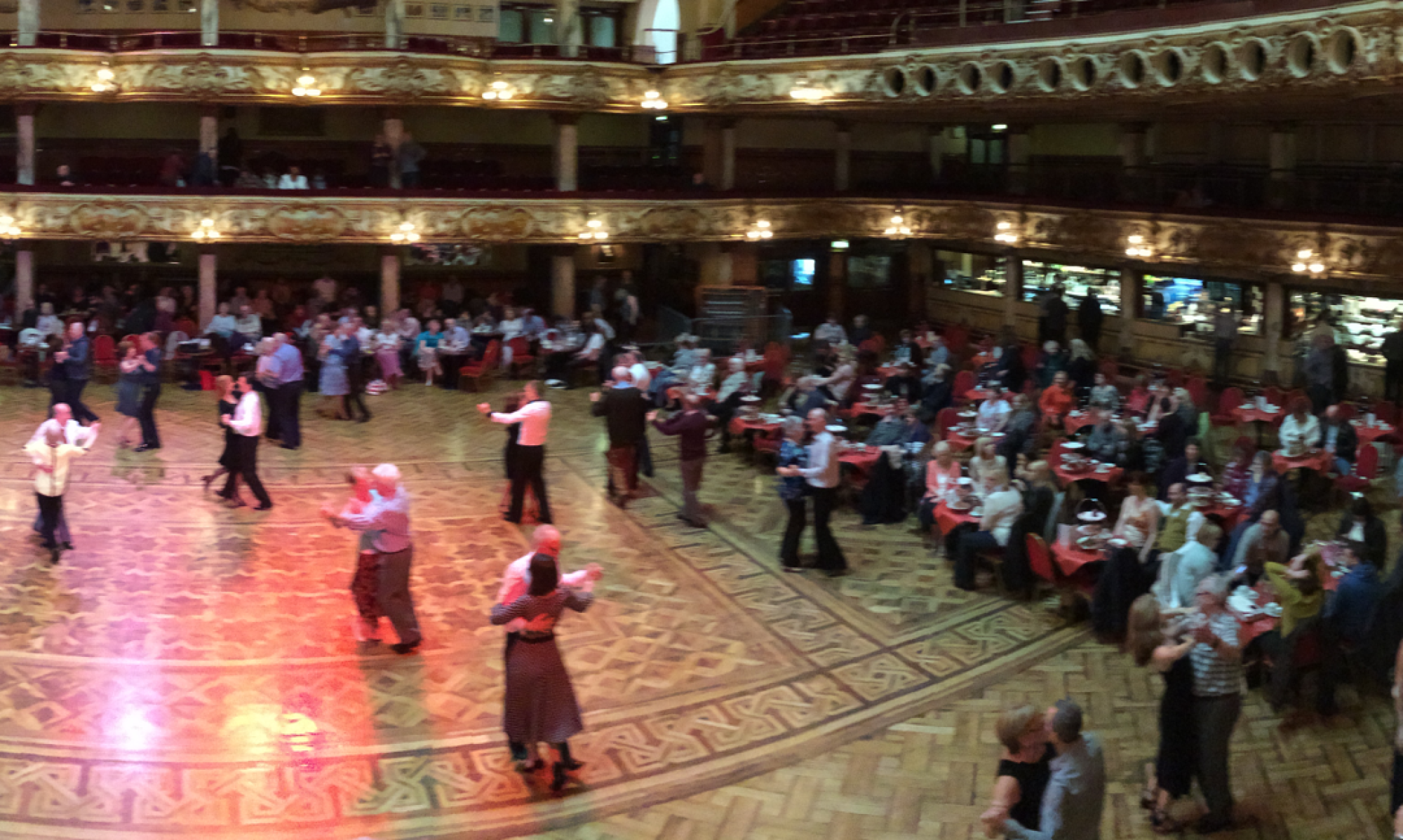Ballroom dancing (loosely defined) refers to a set of partner dances, danced socially and competitively around the world. There are two main styles or ‘dialects’ of ballroom: International and American. There is also nightclub dancing, which tends to be more casual and less competitive in nature.
Bachata
Known for its simplicity and sexiness, the bachata is one of the most popular dances at Latin clubs. Although many prefer its more intimate version with full-body contact, the bachata can also focus on fun rhythm changes and sharp footwork, depending on the style you are learning. Very similar to the merengue in its basics, but with a softer, more sensual feel.
Cha Cha
Perhaps the most popular Latin dance the world over, one of the best descriptions I’ve heard for cha cha is: “it’s like salsa, with attitude.” While the chassé of the basic might challenge you at first, it adds an extra flavour and sensualness to the dance. It’s also a bit slower than salsa, which makes it more accessible when you’re just starting to shake your hips.
Foxtrot
A smooth balance of fun and play, the foxtrot takes you back to the days of Gene Kelly, Fred Astaire, and Ginger Rogers. But even if all that’s before your time, the foxtrot is still just about the classiest way to be fun and flirty with your partner. With its change in tempo and waltz-like quality, especially in the silver steps, foxtrot has always been a personal favourite of mine.
Quickstep
Quickstep consists of a partner ballroom hold in closed position. It’s basic step is at a nearly running pace with hops, skips, points, flicks, crossing of the feet, kicks and more. Today, you can occasionally see traces of the Charleston, Black Bottom, and Peabody influences within the Quickstep dance movement.
Merengue
The merengue is a great start for any dancer who wants to feel the beat and start learning some sexy hip actions – and you’ll learn it faster in this dance than in any other. The beat is strong and easy to follow, and there’s lots of opportunities to play with the steps, or even invent your own. Some of my favourite merengues have actually consisted of cha cha and salsa steps slightly adjusted to go with the steady merengue rhythm.
Rumba
Soft and romantic, rumba is the dance of choice for newcomers who want a slow dance with a sensual look, and experienced dancers looking to perfect their Cuban motion. Connection is king in this dance, so make sure to maintain palm-to-palm pressure during its many one or two-handed leads. Often chosen by couples looking for a wedding dance with a Latin feel.
Salsa
Fast, flirty and ever-changing are the hallmarks of this popular and spicy Latin dance. Often a challenge, particularly for the responder to let go and trust her leader, but once she does, it’s a roller coaster of fun. A must-have for the Latin club socialite.
Samba (American)
Incorporating more body expression of the music then perhaps any other dance, this is a challenging and high-energy dance for those who want to burn some calories, and look damn good doing it. This is NOT the Brazilian samba, but the American samba, which is a bit slower, but there’s still plenty going on. Just go into it expecting a bit of a learning curve. American samba is also unique in that it is the only Latin dance that travels around the floor like a ballroom dance.
Swing, East Coast
This a fun and bouncy dance, great for rock and roll music, while not quite as high-energy as the jive. With its fast spins and changes of direction, it might be described as like an energetic salsa or hustle. East Coast may not have the same smoothness of the other Latin dances, but the constant rise and fall and staccato action gives it an exciting feel all it’s own.
Swing, West Coast
More slinky and soft than its eastern cousin, this dance is deceptively seductive and playful, especially as you become familiar with it’s many embellishments. The key to west coast swing is relaxed, easy-going energy, with plenty of room to infuse your personality with the movement. Sometimes mixed on the dance floor with lindy hop, balboa, or others in the same family.
Tango
Have a flair for the dramatic? Like the idea of striding confidently across the room like Aphrodite or a Roman conqueror? This is the dance for you! Let’s be clear here: This is not Argentine Tango, but Tango (the latter travels counter-clockwise around the room like the other ballroom dances). The music tends to have a strong marching quality, great if you have trouble with your rhythm.
Waltz, Slow
One of the easiest ballroom dances to catch that ‘smooth natural feeling’, waltz is ever a favourite at the local dance hall, as well as weddings and classy business functions. And for those with a sense of old-style chivalry in them, it’s often called the most romantic of the ballroom styles as well.
Waltz, Viennese
Anyone looking to live out their Cinderella fantasies (or Prince Charming’s), look no further. This dance will sweep you away (if you like the momentum of slow waltz, Viennese waltz is twice as much fun). It tends to be more closed than the slow waltz, especially the International style (which never opens up at all), focusing instead on directional changes and small adornments to keep the dance exhilarating.
Jive
Jive is an American dance that evolved from a dance called the Jitterbug by removing the lifts and acrobatic elements. Dancers use a more bouncy type movement using the balls of the feet. A lot of kicks are used in jive. Jive is a very fast, energy-consuming dance.
